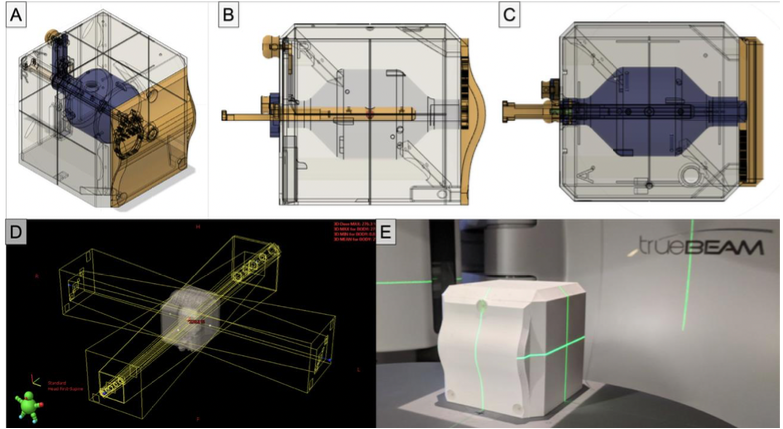Stanford researchers have developed and validated a quality assurance (QA) phantom that will facilitate the translation of a frameless volumetric modulated arc therapy radiosurgery technique. This is critically needed for the commissioning of linear accelerators to perform frameless single-isocenter multitarget stereotactic radiosurgery (SRS) and will enable clinical translation of this highly sought-after workflow solution.
This phantom provides the unique advantage of quantifying the spatial accuracy of a linear accelerator as a function of distance from isocenter (i.e. off-axis spatial accuracy/Winston-Lutz test), as well as the ability to perform various positioning systems acceptance tests and quantifying dosimetric accuracy. This invention will address one of the main bottlenecks limiting the implementation of a frameless single-isocenter, multitarget SRS program, improving efficiency without compromising on coverage or dose-delivery.

Design and development of a QA phantom to quantify the spatial accuracy of a linear accelerator- based single-isocenter, multitarget cranial radiosurgery system (
A-C). (
D) Eclipse treatment plan portal fields. (
E) 3D printed QA phantom on Varian Truebeam (Varian Medical Systems, Palo Alto, CA).
Stage of Research:Prototype phantom that has been used to acquire preliminary results
Related Technologies:US Patent Application US20190175951A1
"Novel integrated multi-modal phantom for combined dosimetry and positioning verification"Stanford docket S17-451
"A novel integrated quality assurance phantom for radiographic and non-radiographic radiotherapy localization and positioning systems"Stanford docket S19-067
"Non-toxic 3D printed device for improving precision in electron beam radiotherapy"